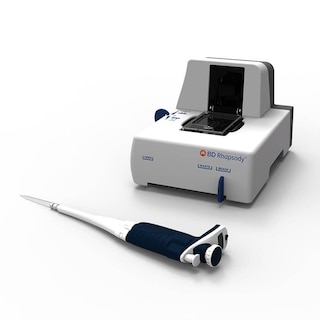-
Your selected country is
Middle East / Africa
- Change country/language
Old Browser
This page has been recently translated and is available in French now.
Looks like you're visiting us from {countryName}.
Would you like to stay on the current country site or be switched to your country?
![Oligo Mouse Anti-Mouse H-2D[d]](/content/dam/bdb/products/global/reagents/single-cell-multiomics-reagents/bd-abseq-assay/940xxx/9404xx/940423_base/940423_01.png)
![Oligo Mouse Anti-Mouse H-2D[d]](/content/dam/bdb/products/global/reagents/single-cell-multiomics-reagents/bd-abseq-assay/940xxx/9404xx/940423_base/940423_01.png)
Oligo Mouse Anti-Mouse H-2D[d]
Regulatory Status Legend
Any use of products other than the permitted use without the express written authorization of Becton, Dickinson and Company is strictly prohibited.
Preparation And Storage
Recommended Assay Procedures
Put all BD® AbSeq Reagents to be pooled into a Latch Rack for 500 µL Tubes (Thermo Fisher Scientific Cat. No. 4900). Arrange the tubes so that they can be easily uncapped and re-capped with an 8-Channel Screw Cap Tube Capper (Thermo Fisher Scientific Cat. No. 4105MAT) and the reagents aliquoted with a multi-channel pipette.
BD® AbSeq tubes should be centrifuged for ≥ 30 seconds at 400 × g to ensure removal of any content in the cap/tube threads prior to the first opening.
Product Notices
- This reagent has been pre-diluted for use at the recommended volume per test. Typical use is 2 µl for 1 × 10^6 cells in a 200-µl staining reaction.
- Source of all serum proteins is from USDA inspected abattoirs located in the United States.
- Caution: Sodium azide yields highly toxic hydrazoic acid under acidic conditions. Dilute azide compounds in running water before discarding to avoid accumulation of potentially explosive deposits in plumbing.
- The production process underwent stringent testing and validation to assure that it generates a high-quality conjugate with consistent performance and specific binding activity. However, verification testing has not been performed on all conjugate lots.
- Illumina is a trademark of Illumina, Inc.
- Please refer to http://regdocs.bd.com to access safety data sheets (SDS).
- Please refer to bd.com/genomics-resources for technical protocols.
- For U.S. patents that may apply, see bd.com/patents.
Companion Products






The 34-2-12 antibody (also known as 34-2-12S) recognizes the α3 domain of the H-2D[d]. The binding of the antibody to its epitope is independent of the α1 and α2 domains and β2 microglobulin. It cross-reacts with cells of the C3H.LG/Ckc strain. Reactivity with other haplotypes (eg, b, f, k, p, q, r, s) has not been observed. Soluble mAb 34-2-12 blocks binding of the Ly-49A-expressing T lymphoma EL4 to immobilized H-2D[d]. However, further studies utilizing this mAb indicate that the α3 domain is not involved in the interaction between Ly-49A, or Ly-49G2, and H-2D[d].
Development References (9)
-
Daniels BF, Karlhofer FM, Seaman WE, Yokoyama WM. A natural killer cell receptor specific for a major histocompatibility complex class I molecule. J Exp Med. 1994; 180(2):687-692. (Clone-specific: Blocking). View Reference
-
Evans GA, Margulies DH, Shykind B, Seidman JG, Ozato K. Exon shuffling: mapping polymorphic determinants on hybrid mouse transplantation antigens. Nature. 1982; 300(5894):755-757. (Biology). View Reference
-
Kane KP. Ly-49 mediates EL4 lymphoma adhesion to isolated class I major histocompatibility complex molecules. J Exp Med. 1994; 179(3):1011-1015. (Clone-specific: Blocking). View Reference
-
Karlhofer FM, Ribaudo RK, Yokoyama WM. MHC class I alloantigen specificity of Ly-49+ IL-2-activated natural killer cells. Nature. 1992; 358(6381):66-70. (Biology). View Reference
-
Mason LH, Ortaldo JR, Young HA, Kumar V, Bennett M, Anderson SK. Cloning and functional characteristics of murine large granular lymphocyte-1: a member of the Ly-49 gene family (Ly-49G2). J Exp Med. 1995; 182(2):293-303. (Biology). View Reference
-
McCluskey J, Bluestone JA, Coligan JE, Maloy WL, Margulies DH. Serologic and T cell recognition of truncated transplantation antigens encoded by in vitro deleted class I major histocompatibility genes. J Immunol. 1986; 136(4):1472-1481. (Clone-specific: Immunoprecipitation). View Reference
-
McCluskey J, Germain RN, Margulies DH. Cell surface expression of an in vitro recombinant class II/class I major histocompatibility complex gene product. J Immunol. 1985; 40(2):247-257. (Clone-specific: Immunoprecipitation). View Reference
-
Otten GR, Bikoff E, Ribaudo RK, Kozlowski S, Margulies DH, Germain RN. Peptide and beta 2-microglobulin regulation of cell surface MHC class I conformation and expression. J Immunol. 1992; 148(12):3723-3732. (Biology). View Reference
-
Ozato K, Mayer NM, Sachs DH. Monoclonal antibodies to mouse major histocompatibility complex antigens.. Transplantation. 1982; 34(3):113-20. (Immunogen: Cytotoxicity). View Reference
Please refer to Support Documents for Quality Certificates
Global - Refer to manufacturer's instructions for use and related User Manuals and Technical data sheets before using this products as described
Comparisons, where applicable, are made against older BD Technology, manual methods or are general performance claims. Comparisons are not made against non-BD technologies, unless otherwise noted.
For Research Use Only. Not for use in diagnostic or therapeutic procedures.
Report a Site Issue
This form is intended to help us improve our website experience. For other support, please visit our Contact Us page.